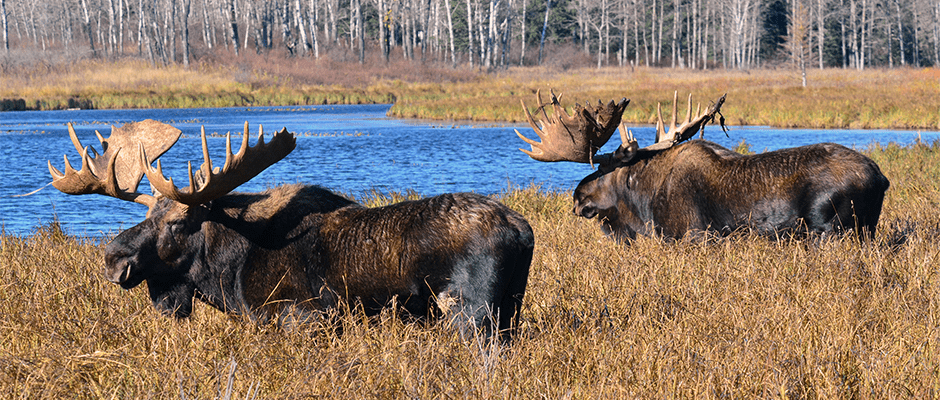Share this article
WSB study: App lets hunters help managers count moose
Counting moose throughout the vast boreal forests and mountain ranges where they roam can be hard to do. Helicopter surveys are effective but expensive, so they tend to be few and far between. But in 2012, biologists in Alberta, Canada created a smart phone application to let hunters — who are actively looking for these animals — help wildlife managers keep a tally of the moose (Alces alces) hunters find.
Using the app, available for iPhones and Android-based phones, hunters enter the number of moose they see. They report if the moose are male, female or calves and include how many hours they spent hunting. If the hunters forget to log the information, a ringtone — the sound of a bellowing female moose in heat — reminds them at the end of the day. If the hunters are out of cellphone range at the time, the information remains on their phones and transmits as soon as a signal appears.
“You can be out in the middle of nowhere, where there’s no cellphone service or anything, and at 8 o’clock in the evening your cellphone will remind you,” said TWS member Mark Boyce, a University of Alberta biologist who developed the program to monitor moose by cellphone with Alberta Environment and Parks. His paper on the program is now available in early view on the Wildlife Society Bulletin. “On your way home, as you drive by the cellphone tower, all the data comes into my server,” added Boyce who tracks the data.
Boyce came up with the idea for an app after looking for ways to improve moose population estimates in Alberta. Aerial surveys for any hunting area often only took place once every 10 years, he said. “If you’re trying to monitor and manage moose populations based on that information, the population could tank before you ever knew about it,” he said.
Then he thought of trips he’d made to Norway and Sweden. There, he said, wildlife managers have done away with aerial surveys altogether and relied instead on hunters’ reports. But those hunters had check stations and formal hunting organizations where they could report their findings. Check stations would be hard to implement in Alberta’s vast wildlife management units, he realized, and hunting organizations like those in Scandinavia didn’t exist. But, Boyce thought, lots of hunters had smart phones.
“It occurred to us, we could develop an app,” he said.
Before each hunting season, the Alberta Fish and Wildlife Division sent a letter to moose hunters encouraging them to download the app and explained how to use it to reduce biases. Hunters were instructed to only report actual moose they saw, not tracks, scat or other sign. Other instructions included reporting only moose they saw on a single day and reporting moose only in the wildlife management unit where they held a hunting permit.
The rollout didn’t go perfectly. On the first day of hunting season, Apple released a new iPhone operating system, forcing the app’s designers to redo it to make it compatible. That left out iPhone users, who made up 73 percent of the participants, for the first three weeks of hunting season.
By the end of three hunting seasons, wildlife managers gathered cellphone information from 695 hunters who reported 3,580 moose. About 5 percent of licensed hunters participated. That was less than half of what researchers hoped, but Boyce said the numbers they returned were still useful and participation has improved in later hunting seasons.
“We don’t have a population estimate, but we do have an index of abundance,” said Boyce, who compared the hunters’ data to aerial surveys and hunters’ postharvest surveys. Because of the relatively few users, Boyce found, the sampling error was too large to rely on hunter data alone.
“The gold standard for estimating moose density remains aerials surveys,” concluded Boyce and co-author Rob Corrigan, a biologist with Alberta Environment and Parks.
The app is still available, Boyce said, and hunters are providing new data. Boyce said he hopes to find incentives to encourage more hunters to use the app to increase the amount of data coming in.
TWS members can log into the member portal to see the early view of the paper. Go to “Publications” and then Wildlife Society Bulletin.
Header Image: A pair of bull moose stand in a meadow in Alberta, where some hunters are using a mobile phone application to help wildlife managers keep track of moose populations. ©Vince Crichton








